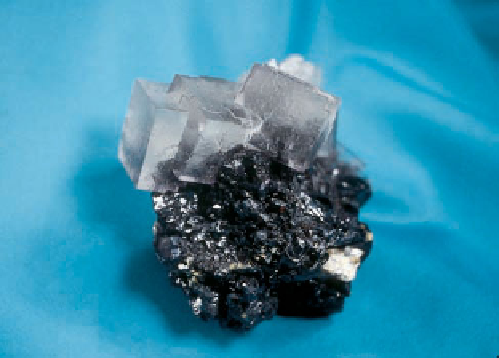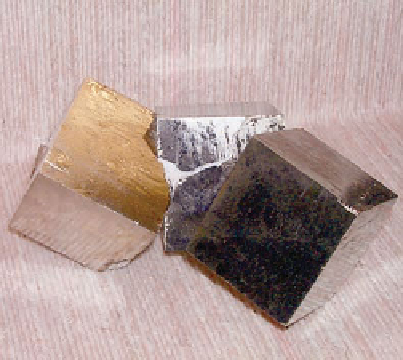Geology Reference
In-Depth Information
?
(sand and gravel, crushed stone, salt, sulfur, etc.), and
energy
resources
(petroleum, natural gas, coal, and uranium). All
of these are indeed resources, but we must make a distinc-
tion between a resource, the total amount of a commodity,
whether discovered or undiscovered, and a
reserve
, which is
only that part of the resource base that is known and can be
economically recovered.
The distinction between a resource and a reserve is sim-
ple enough in principle, but in practice it depends on several
factors, not all of which remain constant. Geographic loca-
tion may be important. For instance, a resource in a remote
region might not be mined because transportation costs are
What Would You Do
The distinction between minerals and rocks is not easy for be-
ginning students to understand. As a teacher, you know that
minerals are made up of chemical elements and that rocks
consist of one or more minerals, but despite your best efforts
to clearly defi ne them, your students commonly mistake one
for the other. Can you think of analogies that might help stu-
dents understand the difference between minerals and rocks?
◗
Figure 3.15
Mineral Crystals Mineral crystals are found in a
variety of shapes, but different minerals may have the same kinds
of crystals as shown by
(
a
-
c
)
below. Even so, differentiating
one from the other is easy.
Fluorite (CaF
2
) can be identifi ed by its cleavage.
b
Pyrite (FeS
2
) is typically brassy yellow (the silvery
color results from the way light is refl ected), and it is
much denser and harder than fl uorite or halite.
a
Some of these gypsum (CaSO
4
·2H
2
O) crystals in a cavern in
Chihuahua, Mexico, measure up to 15.2 m long and may be the
world's largest crystals. They were discovered in April 2000.
d
Halite (NaCl) can be identifi ed by its salty taste.
c










Search WWH ::

Custom Search